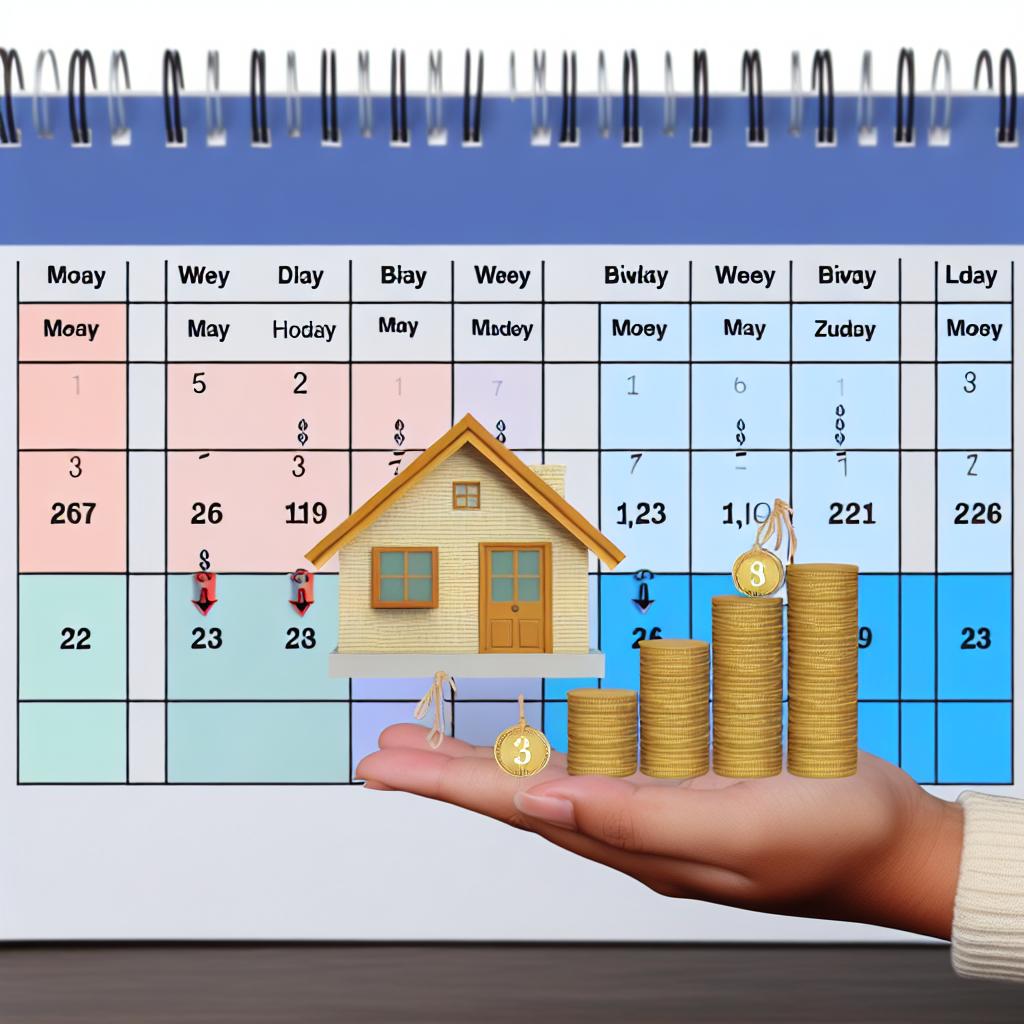
When it comes to paying off a mortgage, homeowners often explore various strategies to reduce interest and payoff time. One such strategy is the bi-weekly mortgage payment plan. This plan involves making payments every two weeks instead of the traditional monthly payment. While it may seem like a slight adjustment, it offers several potential benefits.
Typically, a standard mortgage requires 12 monthly payments each year. In contrast, a bi-weekly payment system involves making half of a monthly payment every two weeks. Consequently, this results in 26 half-payments, which equates to 13 full payments each year instead of 12. Over time, this extra payment can significantly impact the loan balance.
This concept might be better understood by breaking it down further. Consider a homeowner with a monthly mortgage payment of $1,200. Using the bi-weekly payment method, this amount is halved to $600. Instead of paying $1,200 once per month, the homeowner pays $600 every two weeks. In a year, that means making 26 payments of $600 each. The sum total becomes $15,600 annually, compared to the $14,400 you would spend with 12 monthly payments. Thus, the homeowner pays an extra $1,200 annually, which is essentially the equivalent of an additional monthly payment.
One of the primary advantages of bi-weekly payments is the potential for interest savings. By making an additional full payment each year, homeowners reduce the principal balance of their mortgage faster. This reduction in principal means that more of the subsequent payments go towards reducing interest, effectively shortening the loan term.
The financial benefits stem from how interest is calculated. Interest on a mortgage is typically compounded monthly. By reducing the principal amount on a more frequent basis, less interest accumulates over time. This reduction alters the interest calculation from its conventional trajectory, causing a recalibration of each payment’s allocation between interest and principal. Hence, more money goes towards principal reduction in each successive payment cycle.
For those looking to pay off their mortgage faster, a bi-weekly payment plan can reduce the loan term by several years. For instance, a typical 30-year mortgage could potentially be paid off in about 25 to 26 years. The exact reduction depends on factors such as interest rate and loan amount.
This acceleration in loan payoff is achieved without requiring the homeowner to drastically increase their monthly budget. The bi-weekly structure itself enforces discipline in making extra payments indirectly. Over a prolonged period, this approach secures financial freedom far ahead of schedule, relieving homeowners from long-term debt obligation earlier.
Bi-weekly payments can sometimes align better with an individual’s pay schedule, especially for those paid bi-weekly. By matching their mortgage payments with their income flow, homeowners may find it easier to manage their finances. This alignment can help avoid the financial strain often associated with larger monthly payments.
The cash flow management aspect is particularly beneficial for those who find budgeting on a monthly basis challenging. By distributing payments more evenly across the month, household expenses may become easier to manage. Moreover, individuals might experience less strain across non-mortgage financial commitments, leading to a smoother monthly fiscal journey overall.
While the benefits are noteworthy, it is important to consider a few factors. First, ensure your lender supports bi-weekly payments and inquire about any associated fees. Some lenders may charge fees to set up this payment plan, which might offset the savings achieved through early payoff.
Additionally, be wary of third-party services that offer to manage bi-weekly payments for a fee. This service might not provide significant value over setting up the payment plan directly with your lender. For more details on understanding various financial options, visiting authoritative financial portals can offer valuable insights.
It is also essential to examine your financial stability and readiness before adopting bi-weekly payments. Assess cash reserves and general expenditure patterns, ensuring they accommodate the increased payment frequency without causing distress. Ensure that this proactive mortgage strategy bolsters your fiscal health, rather than encumbering daily life due to mismanagement of financial commitments.
Bi-weekly mortgage payments present a practical approach for reducing both the cost and term of a home loan. While not suitable for every homeowner, those who can manage the shift from a monthly to a bi-weekly schedule might find substantial benefits in interest savings and quicker mortgage fulfillment. Thoroughly evaluate your financial situation and consult with your lender to determine the best strategy for your mortgage.
Before making a transition, engage in diligent research and ensure you’re aware of all aspects of your mortgage agreement. It’s wise to analyze whether any penalties for additional payments exist. For some, early payoff penalties can reduce the attractiveness of this payment structure. Knowing all the stipulations could save additional costs and unforeseen fees.
In conclusion, bi-weekly mortgage payments offer a tangible pathway to enhanced fiscal freedom and reduced overall debt obligations. By understanding the mechanics, benefits, and potential pitfalls, homeowners are better equipped to decide if this strategy aligns with their financial objectives. It’s a conscious financial decision, rewarding those who commit to its structure with notable savings and accelerated mortgage resolution.
This article was last updated on: May 19, 2025